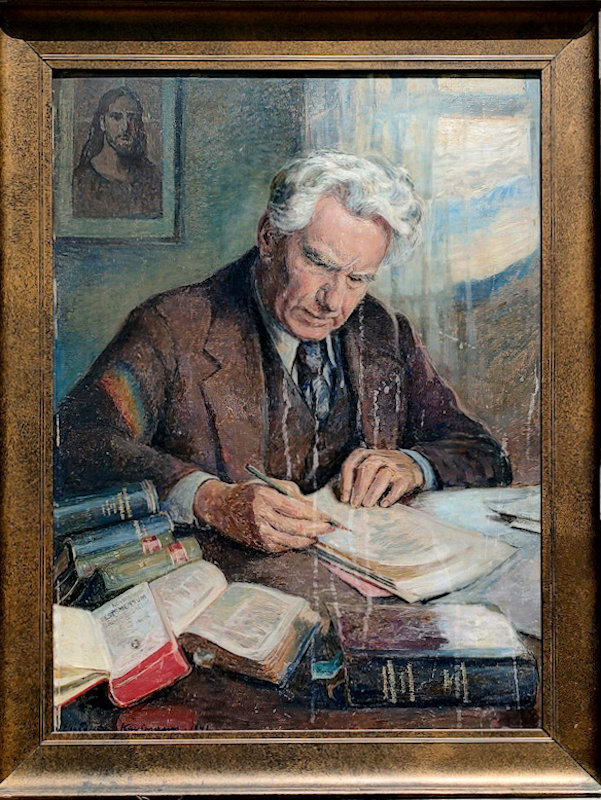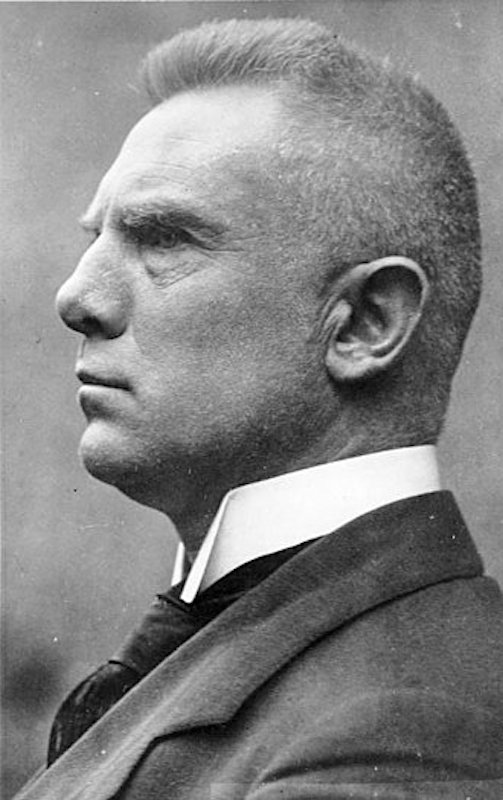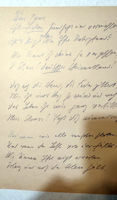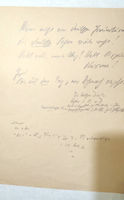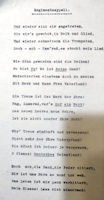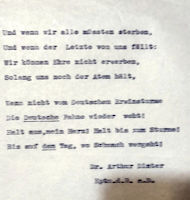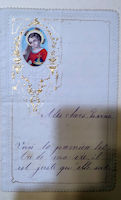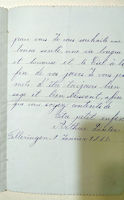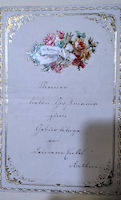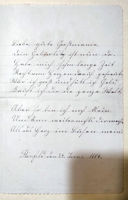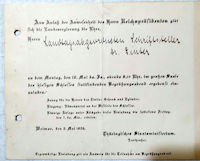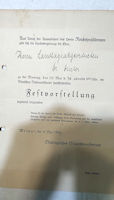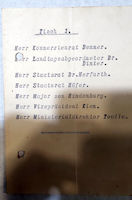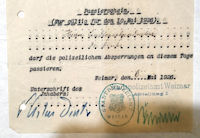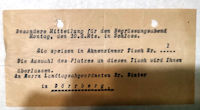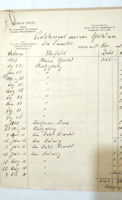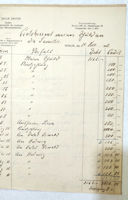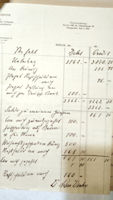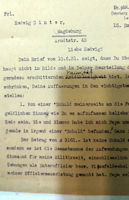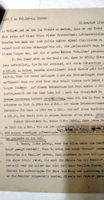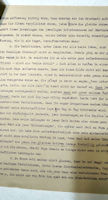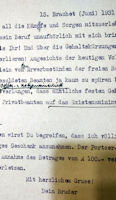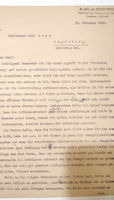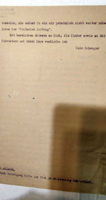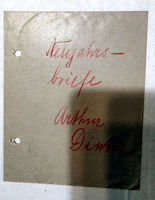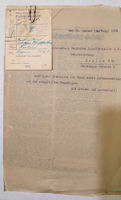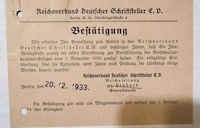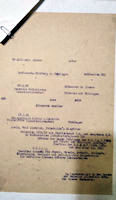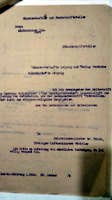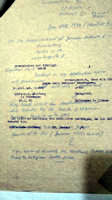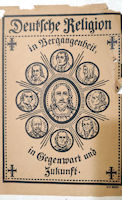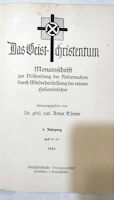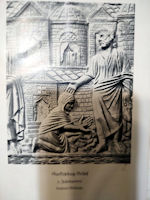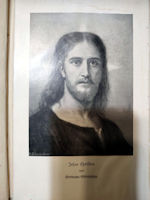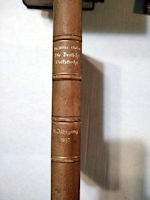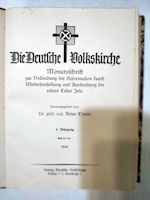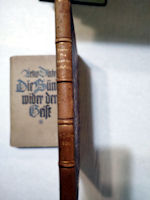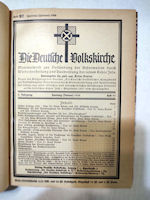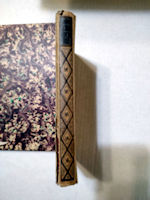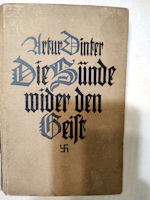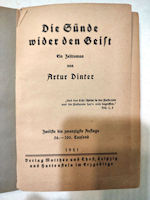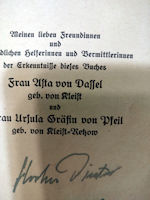The German Christian Movement--Artur Dinter Collection
| |||||||||||||||||||||||||||||||||||||||||||||||||||||
|
Artur Dinter and the “Deutsche Christian Movement” (Item ARTUR DINTER) |
|||||||||||||||||||||||||||||||||||||||||||||||||||||
| DESCRIPTION: Before we discuss Artur Dinter, we have to explain the “Deutsche Christian Movement” in the Third Reich. In Mein Kampf, Hitler stated that Christianity was a mainstay of German life and should not be infringed upon. When he came to power as a Catholic there was much discord between the Catholics and Protestants as to what should be the state religion. This bickering upset the Führer, who declared that there would be an additional Reichs church that did not have all the traditional trappings. These very modest buildings still stand today and are quite plain. However, the Protestants and their history of Martin Luther wanted to “Aryanize” the Bible by declaring that the people of the Bible as well as Jesus were not Jewish, much like “Identity” people still believe today. The Deutsche Christian Movement evolved with people like Artur Dinter at the lead. Born in Mulhouse, in Alsace-Lorraine, German Empire (now France) in 1876, Artur would become involved in two major German movements, the Völkisch Movement and the Deutsche Christian Movement. He was university trained in the natural sciences and philosophy and after graduation was director of the botanical school garden in Strasbourg. He was a senior teacher at a German school in 1904 and sent to Constantinople. The next year he switched to drama and became a theatre leader in his Alsatian homeland. He was also a member of the anti-Semitic and Pan-German Alldeutscher Verband having been removed in 1917. He was a Hauptmann during the war and won the Iron Cross, Second Class. Falling ill with cholera in 1915 he spent the next year in field hospitals having had received serious wounds and was then discharged. While convalescing he read a great deal of Houston Stewart Chamberlain’s works and became a member of the Völkisch Movement. In 1917 he wrote an antisemitic bestselling novel The Sin Against the Blood, which by 1934 sold 260,000 copies. Because of its success he wrote a trilogy called The Sins of the Time. He then joined the Deutschvölkischer Schutz-und Trutzbund being its leader until it was banned in 1922. He then became a founding member of the German Peoples Freedom Party and came to know Hitler who appointed him as the Nazi Party state Leader of Thuringia, a state that had not banned the Nazi Party after the Beer Hall Putsch in Munich in 1923. He became publisher of the newspaper Der Nationalsozialist in Weimar. He fell out of favor with the Völkisch-Sozialer Bloc (Peoples Social Bloc) he had been elected to in 1924. However, for his loyalty to the Party he was awarded the single-digit membership number “5” when the Party was reestablished in 1925 when Hitler was released from prison. Hitler appointed him Gauleiter of Thuringia. Martin Luther’s The Jews and Their Lies was always one of the many historical observations of the Jews and one of the backbones of the movement along with many other grievances thru the ages to the present time. However, Dinter’s real goal came to fruition and that was not political, but religious, and in 1927 he founded the Spiritual Christian Religion Community and in 1934 it was given the new name of the German People’s Church with a commitment to “de-Judaicize” Christian teaching and dropping the violent Old Testament (Martin Luther had a great deal of difficulty with its unfettered violence towards the end of his life). Dinter became one of the major promoters of Jesus’s being Aryan. Hitler did not like this because the Party did not want to mix religion with politics so Hitler removed Dinter as Gauleiter and replaced him with Fritz Sauckel, which surprised Dinter. He started attacking Hitler in his magazine Das Geistchristentum. He proposed a senate resolution to the Party to advise Hitler on all major policy issues which of course, did not go well with the Führer who had him expelled from the Party, but Dinter did not recant.(Just like Luther of old!). The Gestapo had surveillance on him thru the thirties and even arrested him for a short while. Himmler banned his Völkskirche in 1937, and the official writer’s association expelled him as well because you had to be a member to publish for which he was brought before the court. Religion was definitely recognized in the Third Reich and their being a Christian nation in their by-laws. Even the SS, which had promoted going back to natural religion, did have Catholic priests having been brought in by General Léon Degrelle. It is estimated that at least 80 percent of the SS were Christian, but they were made up of many nations, actually having more of outsiders than Germans. We know after Hitler’s “Table Talk” was released, he was very derogatory in his opinions of Christianity because of its 2000 years of violence and superstitions as with Judaism. He was hoping the future would bring a change in Germany. Stating he would never push atheism, a new more rational religion would be more conducive to a more stable Germany. But, it was something he would probably not make mandatory. In 1945, Dinter was sentenced by the Denazification court to a fine of 1000 Reichsmark for his anti-Semitic writings. He died in 1949 in Offenburg, Baden at the age of 71. The collection we present is indeed a rarity of nine books he wrote, and the personal letters to friends and family with the set. Also, there is a large oil painting of him in later life with the Bible and a picture of Jesus in the background while he composes at his desk. Space limits us on elaborating on each book. Images are provided as well as the numerous letters he wrote. They are truly historic, for instance he signs letters with “Mit Hitler und Lutherheil”–“With Hitler and Hail Luther.” There are nine sets of papers—most have translations, but again, space does not warrant our listing this but can be sent upon request. Here is a listing of the sets of correspondence: 1. Letter with newspaper 2. An original poem he composed “Regimentsappell” (“Regimental Rollcall”) which is handwritten and then typed. Includes notes having to do with his military career. 3. Two cards to his parents by friends or relatives in 1883 and 1884, that must have been important to him. The 1883 one is to the “little child Arthur Dinter” “Arthur” is spelled like this, not Artur as he spells it. 4. Prayer by Dinter; original with two copies. 5. Invitation to dinner at the Heritage Castle of Weimar on May 10, 1926, on the occasion of a visit by President von Hindenburg. Dinter will sit at Table One with him and several others listed. There is a police checkpoint card clearing him for dinner. A card of entrance to the theatre presentation of a Wagner opera which attends the function. The menu for the dinner stating that it has required dress of black suit and top hat. 6. Sister sends her letter from 1910 from the mother—four pages. 7. Letter of 1931 to his sister Hedwig about having to repay for a room his father obtained for him in 1911. 8. Letter with envelope to brother-in-law complaining that a newspaper won’t print his articles. Asks brother-in-law to submit them without exposing who they came from. 9. List of his career-military, education, and teaching positions and belonging to the NSDAP in regards to taxes. There are eight volumes of his books starting from 1928 to 1935; volume five is missing. Then there is smaller book with a swastika-embellished spine published in 1922. This is the only book that is signed with also a note that is signed by him. The volumes are all in excellent condition. The painting is in excellent condition and was done by an artist named Kaufmann (I cannot make out the first name) in 1943 so Dinter is 67 when it was done. The painting itself is 35 inches long by 25 inches; in frame, 40 x 31. This is indeed a rare and significant finding in regards to the Deutsche Christian Movement. There is so much propaganda on this as pretty much everything Third Reich. That these letters and books survived is quite bizarre. We are thinking this was in the family and someone just decided to part with it but had the sense enough to realize that this collection is indeed historically important. That the books, letters and painting are so well-preserved leads us to this assumption. SOLD |
Contact Us
Please E-mail for any additional information you may need.
If you prefer, contact 'Germania' at PO Box 68, Lakemont, GA 30552
or call at 706.782.1668.
Please! do not call during the wee hours of the morning. The best time for calling us is between 10 am and 12 noon and between 9 and 11 pm eastern time.
